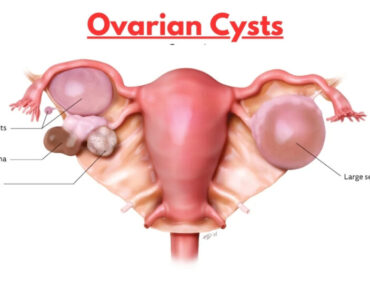One of the most basic concepts of natural conception is learning how to recognise the signs of ovulation in order to pinpoint your fertile window month to month and be able to increase your chances of getting pregnant.
This be simply accomplished through fertility charting on a fertility calendar. By recording various signals from your body day to day, over the course of several months, you will begin recognising the patterns which indicate your ovulation and your most fertile days.
For many women, however, the idea of charting can sometimes seem complicated and overwhelming. If that’s you, it doesn’t have to be. If you know what to look for, including understanding basal body temperature, fertile mucus and cervix position, all it takes is a little time and patience to begin putting the signs together.
 Click here to learn how to achieve regular ovulation to boost your fertility.
Click here to learn how to achieve regular ovulation to boost your fertility.
How The Menstrual Cycle Works
Before we delve into the nitty-gritty of charting on a fertility calendar, let’s do a quick review of the phases experienced during your monthly cycle. This will come in handy when we begin discussing how your basal body temperature, cervical mucus and cervix position change during each of those phases.
The four phases of the menstrual cycle include;
The Menstrual Phase: The very first day of menstruation counts as day one of your cycle. Usually, this phase can last anywhere from three to seven days.
The Follicular Phase: During the follicular phase, your uterine lining begins to thicken in preparation for potential implantation. Follicle Stimulating Hormone (FSH) levels also increase, prompting the maturation of follicles in your ovaries. It is those follicles which will eventually develop into eggs throughout the follicular phase, with only a single egg being released during the next phase of the cycle.
The Ovulatory Phase: Ovulation occurs when an egg is released from one of your ovaries around mid-cycle: anywhere from day 11 to day 16 typically. From that point, the egg has approximately 24 hours to become fertilized.
The Luteal Phase: Immediately after ovulation, the body experiences an increase in progesterone, fuelled by the corpus luteum; the follicle responsible for releasing the egg. This occurs during what is known as the Luteal Phase. Should that egg become fertilized, the increase in progesterone aids in the process of implantation, which typically takes place anywhere from five to ten days after ovulation. If fertilization fails to occur, or if implantation is for some reason hindered, the body will cycle back to the menstrual phase and the cycle will continue on an on again.
Remember that the average menstrual cycle lasts 28 days, but normal cycles can be anywhere from 21 to 35 days. In addition to that, variations of three to five days in your cycle length from month to month are nothing to worry about.
As long as your cycles remain fairly normal for you, pinpointing the patterns of ovulation simply requires learning about and remaining aware of the three basic signals your body will send you.
How To Recognise The Three Signals of Ovulation
During any given menstrual cycle, your body is shifting and changing as it moves through the four phases we have already discussed.
The three ways those changes will be most obvious to you are through elevations in your basal body temperature, changes in your cervical mucus, and shifts in the position of your cervix.
Recognising those changes and identifying your most fertile days is possible by remaining cognisant of those three ovulation signs which are fully discussed below:
1. Basal Body Temperature
Your Basal Body Temperature (BBT) is what is known as your baseline temperature. This is the temperature you should be able to measure first thing in the morning, prior to getting out of bed or partaking in any activities or conversations which could alter your temperature.
Your Basal Body Temperature is important because it varies by a small percentage day to day throughout the course of the month as a result of the hormone changes your body experiences during the different phases of your cycle.
After about three months of monitoring, you will notice a peak which occurs immediately following ovulation. This can help you to estimate when ovulation will occur in the future, allowing you to identify your fertile window which will invariably help to increase your chance of conception.
Monitoring your BBT means keeping a thermometer by your bed for easy access in the mornings. A digital BBT thermometer is typically best, because they are precise enough to catch the slight shifts in temperature which may otherwise be imperceptible with a more basic thermometer.
You should aim to take your temperature at the same time every day, always immediately upon waking up. Remember that this is supposed to be your baseline temperature, so it is important to take it before engaging in any other activities at all.
2. Cervical Mucus
The second sign of ovulation can be found by monitoring your cervical mucus. Not all women are comfortable with the idea of touching and examining these bodily fluids, but your cervical mucus changes throughout the month in order to become more hospitable to sperm as you approach ovulation, turning into what is known as fertile mucus.
This makes it a valuable resource to consult when it comes to determining when your fertile window may be. After menstruation, start by getting a small amount of cervical mucus on your fingers or a piece of toilet paper each day, preferably after you have showered and when there are no other lubricants which may be present.
Begin monitoring it for consistency, noting whether it is stringy, slippery or sticky from day to day. You will notice that just after you finish menstruating, you won’t have much cervical mucus at all to observe, but by the second week of your cycle, it should begin to increase.
At first, it will likely appear thick and sticky, with a white or yellowish coloration. The closer you get to ovulation and your fertile window, however, the more clear and stretchy it will become. This is what is considered as-fertile mucus, as it paves the way for sperm to travel easily to the egg. Fertile mucus is often also referred to as “egg-white cervical mucus”, because of the resemblance it has to egg-whites.
3. Position of Cervix
Perhaps slightly more uncomfortable is the monitoring of your cervical position, but again – this is yet another way to determine when you are nearing ovulation naturally.
The hormonal fluctuations in your body cause your cervix position to shift, moving up and down while also becoming more or less firm, depending on where you are in your cycle.
It can take some time to gain a complete understanding of what you are feeling when you monitor your cervix position, but daily repetition may help you to begin noticing the difference throughout the course of your cycle.
Start by finding a comfortable position and sticking one or two fingers inside your vagina. Reaching back against your vaginal wall, you want to find the small opening about a fingers-length back. This opening, your cervix, is where you will notice changes based on which phase of your cycle you are in.
As you near ovulation, your cervix will feel higher than it does immediately following menstruation. It will also feel softer to the touch and more open, preparing for the entrance of incoming sperm. At first, you won’t likely be able to decipher any of these differences, but with time (and as your comfort level grows) monitoring your cervical position will become something you can do quickly and easily at the start of each day.
Fertility Charting
Now that you know what the ovulation signs that you should be looking out for are, let’s discuss how charting comes into play.
By documenting the signals you observe from day to day, you will begin to recognise patterns in your basal body temperature, cervical mucus and cervix position which can help you to estimate your fertile window for future cycles.
This allows you to time intercourse in order to achieve the best possible chance of getting pregnant. Create a chart starting with the first day of your period as day one. On this chart, make notes pertaining to the signals you have observed each day, including what your BBT was, and what you have noticed about your cervical mucus and cervix position.
What you should begin to see with your temperature is an increase of approximately 0.4° Fahrenheit after you ovulate, remaining slightly elevated for the remainder of your Luteal Phase. Seeing all these signals together, should help you to start recognising the days of your cycle when ovulation is typically occurring month to month.
If this article has helped you in anyway, endeavour to also share it with other women to benefit too.
Click here to get any of our natural Health Remedy Kits if you desire a natural therapy to help you conceive easily.
Stay healthy and never give up!
Plan B Wellness Nigeria Limited
Whatsapp, Call, SMS: +2348099666658, +2348099666648
Call and SMS only: +2348099666650
Email: consult@planbwellness.com
IG: @planbwellness
Twitter: @planbwellness












[…] properly, a miscarriage could occur. Many women will not know this is happening unless they do fertility charting and can tell how long their luteal phase […]
[…] To better understand how to plan for pregnancy, refer to our guide on secret of fertility charting. […]